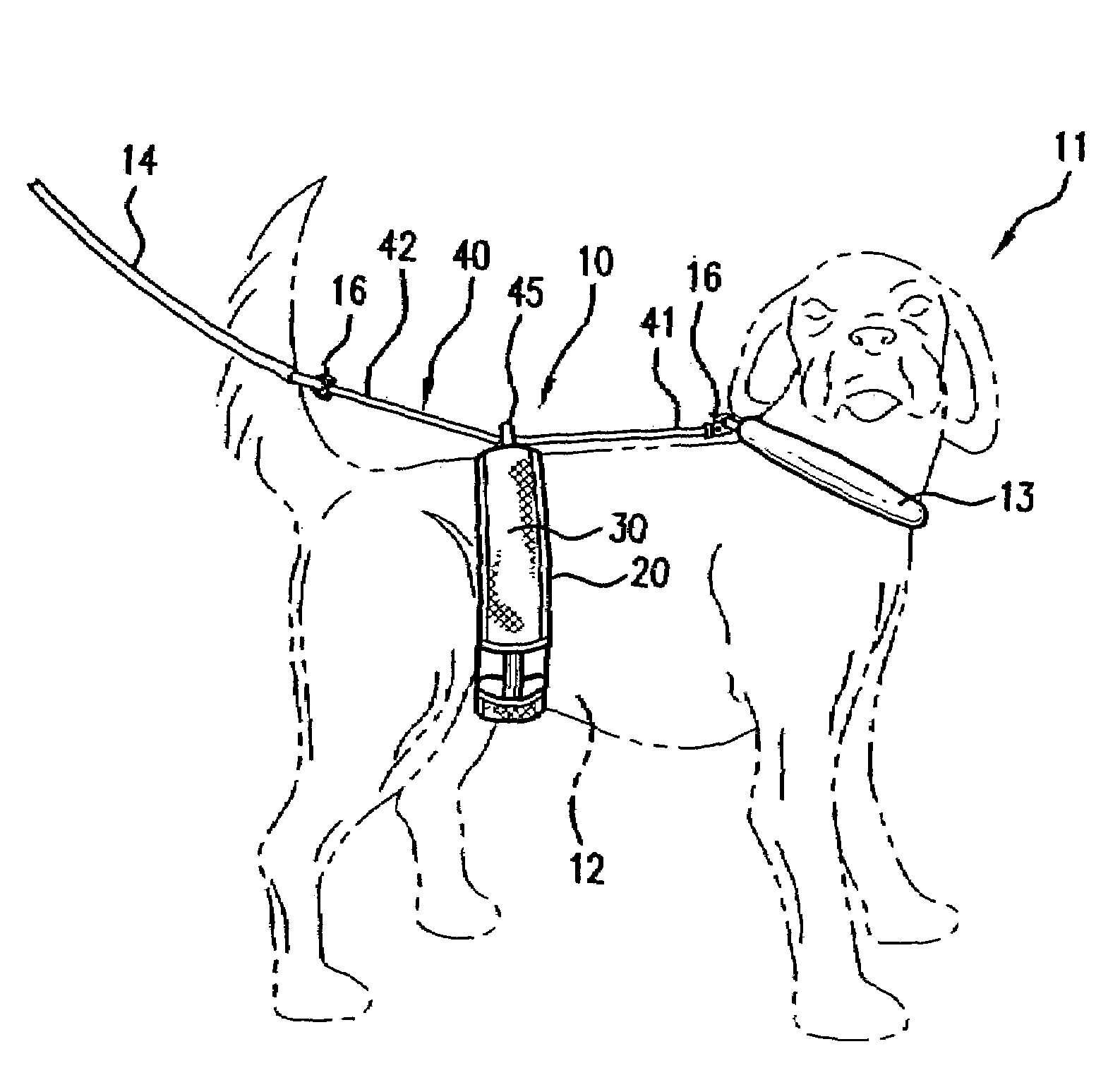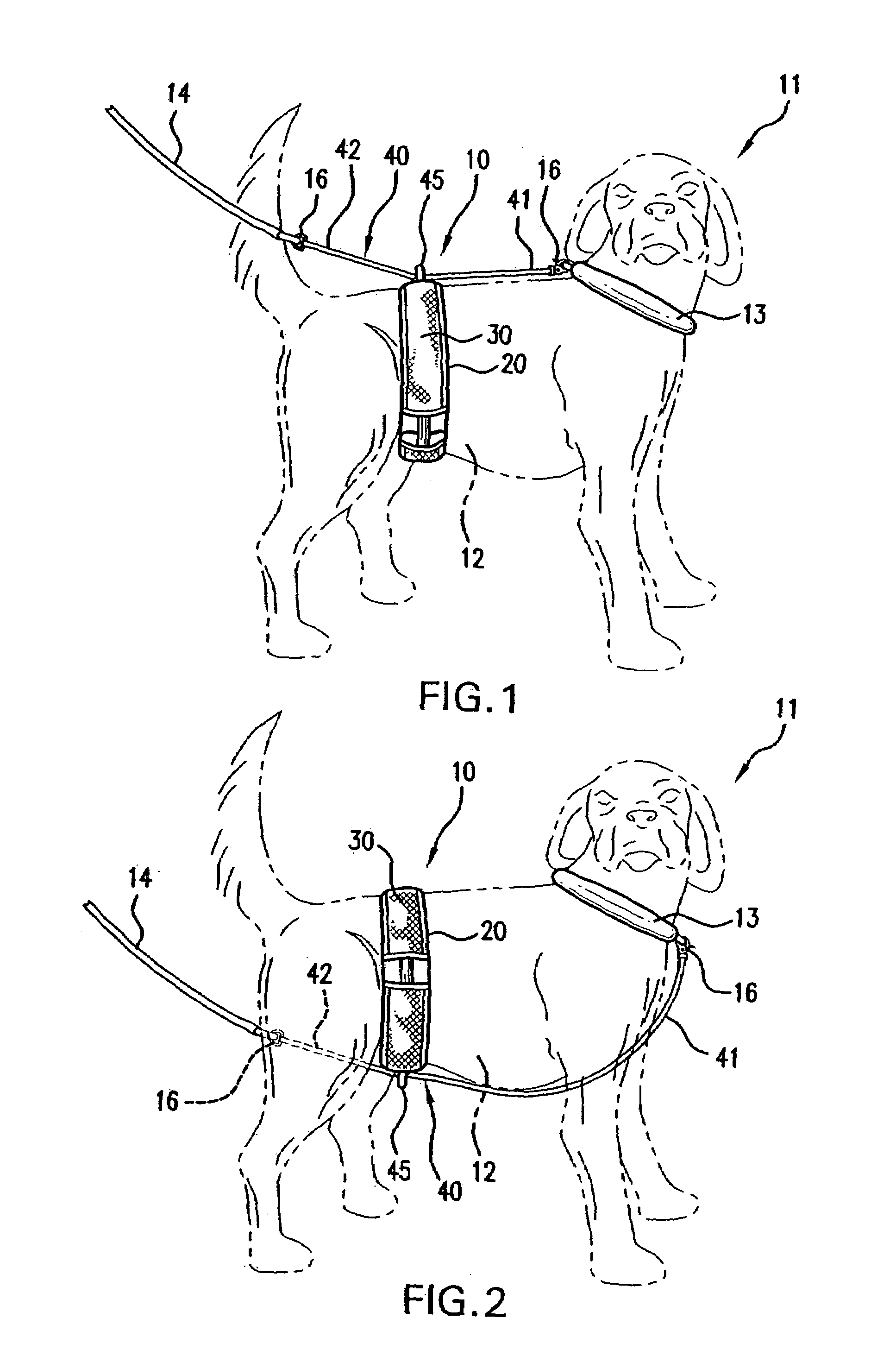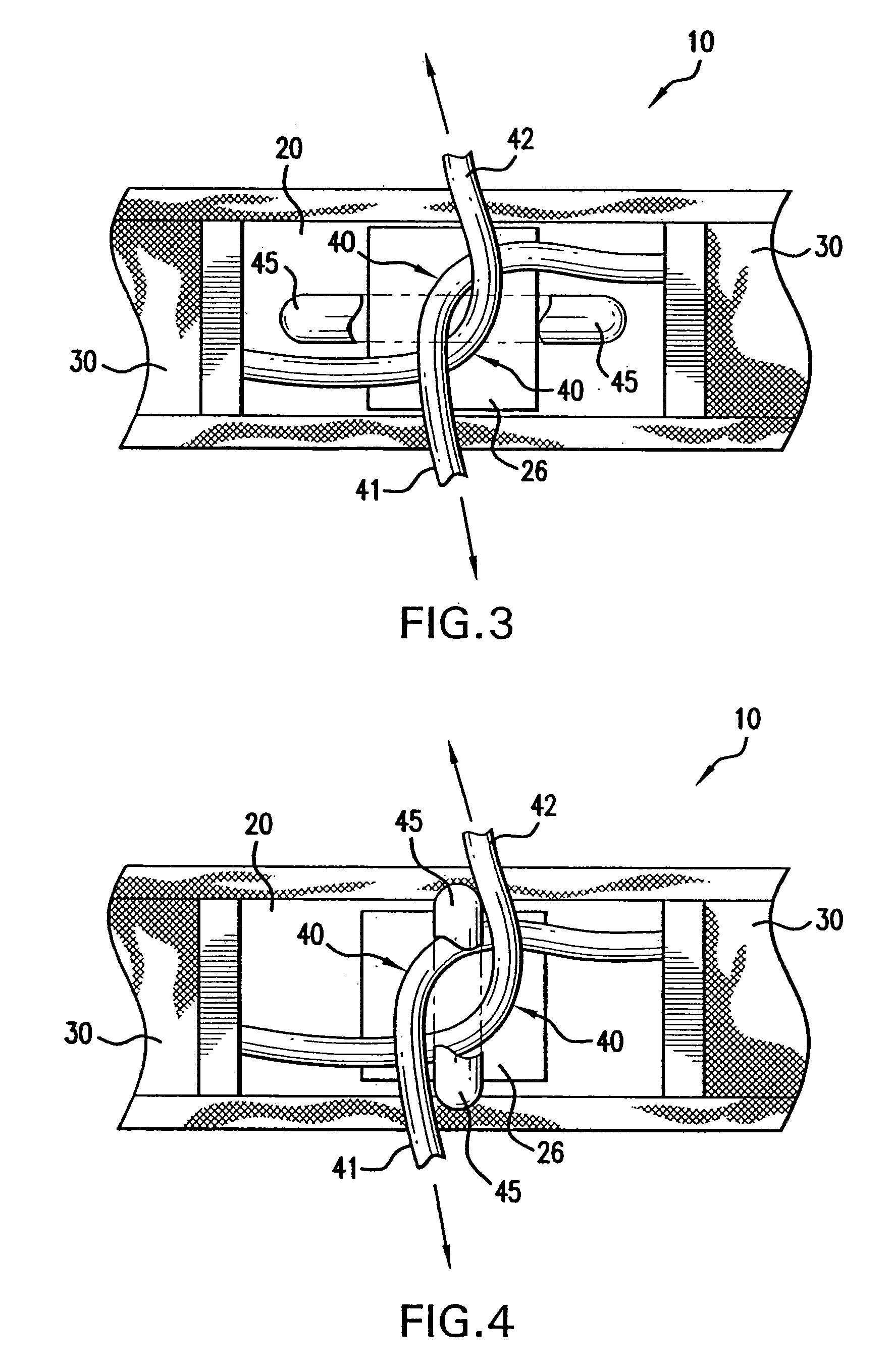Animal restraining apparatus
a technology for restraining apparatus and animals, which is applied in the field of animal restraining apparatus, can solve the problems of collar choking or other undesirable force on the neck portion of the animal, and achieve the effect of reducing undesirable force and reducing pulling for
- Summary
- Abstract
- Description
- Claims
- Application Information
AI Technical Summary
Benefits of technology
Problems solved by technology
Method used
Image
Examples
Embodiment Construction
[0025]FIGS. 1 and 2 show animal restraining apparatus 10 positioned on animal 11, such as a dog, and acting as a cincture positioned about girth 12 of animal 11.
[0026]FIGS. 5, 7A, 7B and 8 show belt 20 forming a void or opening 22. FIGS. 1 and 2 show girth 12 of animal 11 positioned within opening 22. Opposing free end portions 41 and 42 of line 40 are pulled in opposite directions to reduce the size of opening 22, such as shown in FIG. 7B. As belt 20 tightens about girth 12 of animal 11, the constricting movement grabs the attention of and thus restrains animal 11.
[0027]Belt 20 can be positioned at various suitable locations along the body of animal 11. FIGS. 1 and 2 show one preferred position of belt 20 with respect to animal 11, where belt 20 is slightly forward of the front portion of the two rear legs of animal 11.
[0028]FIG. 1 shows belt 20 positioned so that keeper element 45 points upward. In this position, free end portion 42 of line 40 and / or leash 14 is routed over the ba...
PUM
 Login to View More
Login to View More Abstract
Description
Claims
Application Information
 Login to View More
Login to View More - R&D
- Intellectual Property
- Life Sciences
- Materials
- Tech Scout
- Unparalleled Data Quality
- Higher Quality Content
- 60% Fewer Hallucinations
Browse by: Latest US Patents, China's latest patents, Technical Efficacy Thesaurus, Application Domain, Technology Topic, Popular Technical Reports.
© 2025 PatSnap. All rights reserved.Legal|Privacy policy|Modern Slavery Act Transparency Statement|Sitemap|About US| Contact US: help@patsnap.com



